| EXHIBITIONS NEWS PRESS ABOUT US CONTACT |
|||||
| REPRESENTED ARTISTS | BERTILLE BAK | GWENAEL BELANGER | DEXTER DYMOKE | ANTTI LAITINEN | |
| MARKO MAETAMM | YUDI NOOR | OLIVER PIETSCH | KIM RUGG | ||
| BETTINA SAMSON | SINTA WERNER | ||||
SINTA
WERNER
Along
the Sight Lines
3 SEPTEMBER - 17 OCTOBER 2010
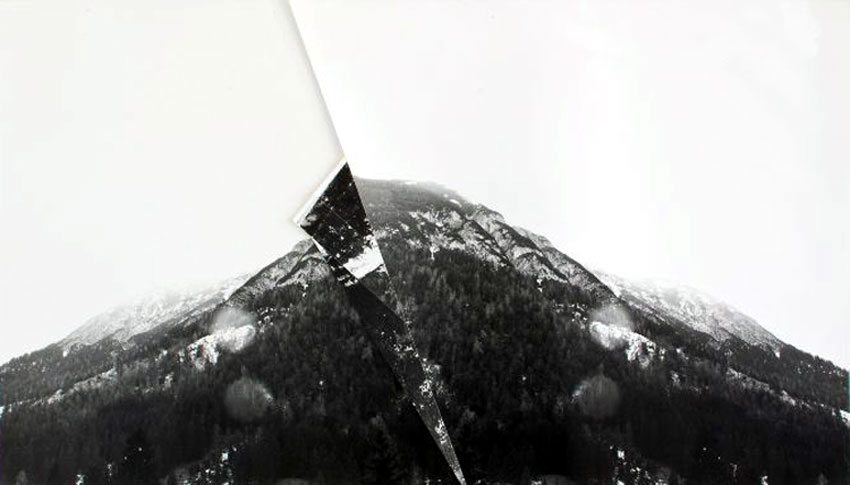
NETTIE HORN is pleased to present the
second UK solo exhibition by Berlin based artist Sinta Werner featuring
a site-specific installation as well as a new series of collages.
Werner aims to interrogate our conventional ways of seeing and representing through
elaborate fictitious environments. The creation of these architectonic works
notably contributes to her exploration of virtual and physical boundaries, the
indefinable notion of "in-betweens" as well as other such aspects linking
the two and the three dimensional.
Within the main space of the gallery, Werner’s site specific installation “Along the Sight Lines” stems from her playful use of the effect of “double exposure” – the installation in itself evokes a vision perceived from two different angles which is effective from the optimal viewing point of the threshold of the space. In order to create this “double-take”, Werner resorts to a combination of processes driven by the use of digital media; an important and innovative element in her work. As a starting point, she uses images of the gallery space which she then projects within that same space by shifting its original positioning – the whole architectural configuration being in this way subjected to a virtual spatial rotation. In order to create this second exposure, Werner materializes this shifted image of the entitic structure through two steps: certain architectural elements such as pillars and beams are rebuilt while the walls, floor, ceiling and pillars are painted according to the projected anamorphic images.
The experiencing of Werner’s
site-specific work is reached through a dual process of revelation:
at first, the concept of one-point-perspective, which intervenes in
most of her installations, offers a fixed and contemplative vision
refering to photography and Renaissance painting; the discovery of
the mechanisms of the illusion then leads to a vision of multiple points
of views recalling postmodernistic principles.
The use of digital media intervenes logically and intrinsically in
Werner’s work and allows the elements of disillusionment and
deconstruction to be as important as the one of illusion. Jean Baudrillard
expresses this particular idea in his essay “Aesthetic, Illusion
and Disillusion” whereby he explains how virtuality allows
us to step beyond illusion (to the point of its near destruction) and
enabling us to enter the image itself. This virtuality creates a three-dimensional
realistic image and may even go so far as to reveal a fourth dimension,
transforming it to the point of the hyper real...(1). By pushing the
viewer to go beyond the illusion Werner allows them to become aware
of their own perception of space and their own movement in space, effectively
evoking the notion of stability - and thus sending us back to the true
nature of our subjectivity as being fragmented and de-centered (2).
- See “Aesthetic, Illusion and Disillusion” in The Conspiracy of Art by Jean Baudrillard, 1997.
- See Claire Bishop, Installation Art: A Critical History, Tate Publishing, 2008.
Sinta Werner was born in 1977 in Germany. She lives
and works in Berlin.
Solo shows include: “Supervisionen”, COMA, Berlin (2010); “Displayed
Windows”, Showreelproject.com#4, Milano (2010); “Out
of Frame”, Christinger de Mayo, Zurich (2009); “Der
subversive Raum”, Galerie Kunstverein, Baden, Austria (2009); “Grey
Areas”, NETTIE HORN, London (2008); “The Third Floor”,
COMA, Berlin (2008).
Group shows include: “Where gravity makes you float”, Grimmuseum,
Berlin (2010); “Magic Show”, Hayward Gallery, touring exhibition
(2009-2010); “Sensescapes”, NETTIE HORN, London
(2010); “Tiefer Raum und Fremde Welt”, Kunstverein
Aichach, Germany (2009).
SPACES OF DISILLUSION
SINTA WERNER talks to Paul Carey-Kent
Over the past few years, the young German artist Sinta Werner has become known for the site-specific and site-responsive installations she has made across Europe. They reconfigure spaces to provide spectators with one coherent and momentarily straightforward view, only for that to collapse into myriad alternatives when the viewer moves. The effect is typically of trompe l’oeil in reverse: instead of a two dimensional illusion of three dimensions, Werner conjures a three dimensional illusion of two dimensions. It’s an entertainment in itself when the spectator’s shift reveals the mechanisms of the deception, but that also brings a fresh focus to the gallery space, exposes the differences between classical and modern understandings of the world, and provides a post-modern illustration of how multiple points of view undermine any expectation of objective truth. Her new show, ‘Along the Sight Lines’, takes those concerns in a digital direction which also brings virtual worlds to mind, and is accompanied by collages which address parallel issues.
How should your name be pronounced?
Sinta is an Indonesian name, which should strictly have more of a ‘d’ than
a ‘t’ in it, with even stresses on the syllables – but
as a German I say ‘t’. ‘Werner’ is a German
first name and should be pronounced with a ‘V’ in English.
What led you to become an artist?
I grew up in Karlsruhe in south-west Germany. My interest in drawing and painting doesn’t come from my parents – who are engineers – but was always just there. At eighteen I moved to Berlin by myself, lived in a squat, and got to know artists. After three years there I started my artistic training, which included gaining an MA from Goldsmiths in 2007.
You work as Franz Ackermann’s assistant. Is that helpful?
Yes, it gives me an ideal balance. I have been doing it for five years – apart from my year in London – for two days a week, with some extra time traveling to make wall paintings. In fact I trained as a painter before I switched to installation at Goldsmiths, but now I don’t paint much apart from as an assistant – although in some works I include the process of painting, for example in ‘Along the Sight Lines’ I have painted a realistic image of the space into the space.
How do your installations develop?
I start by looking at the space for the exhibition – my ideas develop from that – and I build a model of the space and respond to it. Then I was on site for nearly two weeks to build ‘Along the Sight Lines’, fitting it to the actual space.
How does ‘Along the Sight Lines’ work?
There is a double exposure of one image, so that the first image is the real space and the second image is the same space two steps to the right, so you see it from two different angles pushed together. I want to materialise a photograph and at the same time dematerialise the space by letting it appear transparent.
What perspective do you use?
The way I construct installations is taken from one point perspective – I use strings and a tripod in order to set out the perspectives to be followed. That then forms a window on the space which works in the same way as in the theory of renaissance perspective, such as Alberti’s visual pyramid in which everything within the triangular set of rays leading back to the eye makes the picture which is the base of the pyramid. But as the viewer moves around my installations, there are multiple perspectives.
There’s something mathematically exact in your work, then, but the result is quite mysterious, perhaps uncanny…
Yes I like these contradictions. I use the basic principles of geometry to build precise constructions, but what happens is meant to be less logical and more dreamlike.
Would you describe your work as theatrical?
Yes, as the spectator is at the same time a kind of performer on the stage, and there is a front side and a back side to the work. As in a stage set, you can experience the work from ‘behind the scenes’. And, as my work is always in between two and three dimensions, that led me to an interest in the foreshortened stage as an element of theatre design. My installations, like stage designs, are about setting up an image in space.
Do you aim to trick the spectator?
I enjoy that, yes, but the trick only lasts for a second, so it’s more about the disillusionment than about the initial illusion. It's about centering the spectator when they stand at a particular viewing point, but then giving them all the other different possible places to look at the installation from – from which it is something fragmented and cubist, like a space falling out of the original space. The other perspectives interest me more than the moment of trickery.
In several installations, such as ‘Grey Areas’ (your previous show at Nettie Horn) you have set up imaginary mirrors. What’s that about?
It’s about the idea of flattening an image, reversing the idea of illusory depth in a painting so that it’s the flatness which is an illusion. There is also something psychological about experiencing the mirror but not your own mirror image in it.
The mirror also proposes another world you could step into. I’m interested in how Foucault used the metaphor of the mirror in his lecture ‘Of Other Spaces’ (1967). He introduces ‘heterotopias’ as alternative spaces which work in the same way as utopias but which are real spaces – like a garden, cemetery or prison – spaces which are relevant for society in order to be other, yet which also reflect the society itself. The mirror stands for the utopia as well as the heterotopia.
Is the gallery a heterotopia in that way?
Yes, and as I don’t make a proper artwork in the usual way, the gallery space is left open to reflect on itself at another level. You can then think about how the space looks architecturally and what the gallery space is made for. My proposals are in one way an empty gallery space. What interests me is breaking the borders between the architecture and the work – what is the gallery space and what is the art work? The gallery space itself becomes part of the work.
Is there a sense in which you make not just the gallery, but also the viewer, disappear?
Yes, there is a parallel. The viewer should become aware of his own position and performance in the space, but at the same time he is not visible in the mirror. And maybe there is a parallel with the gallery space in that by representing and doubling the architecture you point to it and give it room to be looked at.
Does the way the viewer sees behind the illusion in your installations stand in for how we may be disillusioned in life?
It can do, yes. It points up how you can’t really trust anything you perceive, there are always different viewpoints, there is not one truth, everything is very subjective and changing all the time. And the world is mediated through 2D media which you come to rely on.
Foucault said that the anxiety of modern times has to do with space more than with time. Are your installations all about space, or is there time in there as well?
It’s more about stagnated time. This new installation uses digital media somewhat like making a virtual reality, in which you would sit in front of the screen and the space would be what moves around you. That way, the relationship between spectator and space is reversed compared with the one in reality. In 'Along the Sight Lines' you leave the fixed standing point – as the one in front of a photograph or a computer screen - and you are able to see behind the construction or to see a construction that doesn't work any more. Either way, time is stagnated but the movement in time changes the way the space is seen.
Could you say something about your collages?
They are made from photographs I take myself, and like my installations they explore the space between two and three dimensions. I am showing a new series using landscapes with certain elements cut out such that they look a bit like hallucinations and propose some other dimension – like a fourth dimension.
How do the collages relate to the installations?
Sometimes they lead to ideas for installation, sometimes they don’t - but when I make collages I always imagine how they would look as real spaces transferred to three dimensions. I think of them as sketches for something which could be three dimensional, even if I can’t make them in practice, for example because it is of a huge mountain.
Who inspires you?
I particularly like Matisse, and also minimalist artists. Robert Smithson, Gordon Matta-Clark, Jan Dibbets and Richard Wilson are interesting artists who share some of my concerns.
For inquiries regarding availability of works and prices, or additional information about the artist, please contact the gallery.
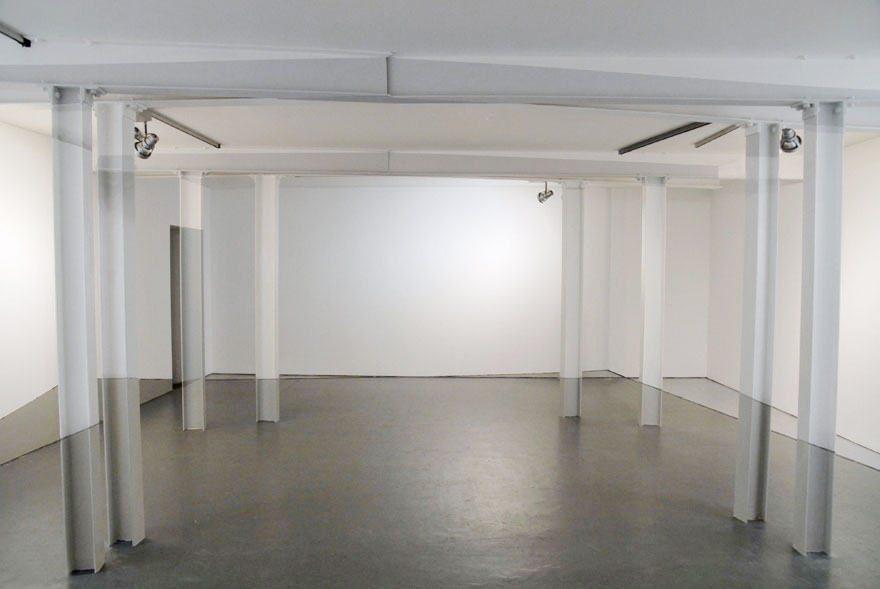
Along the Sight Lines, Installation View, NETTIE HORN, 2010

Zwischen Lenggries und Schwarz I, 2010, Collage, 90 x 50
cm
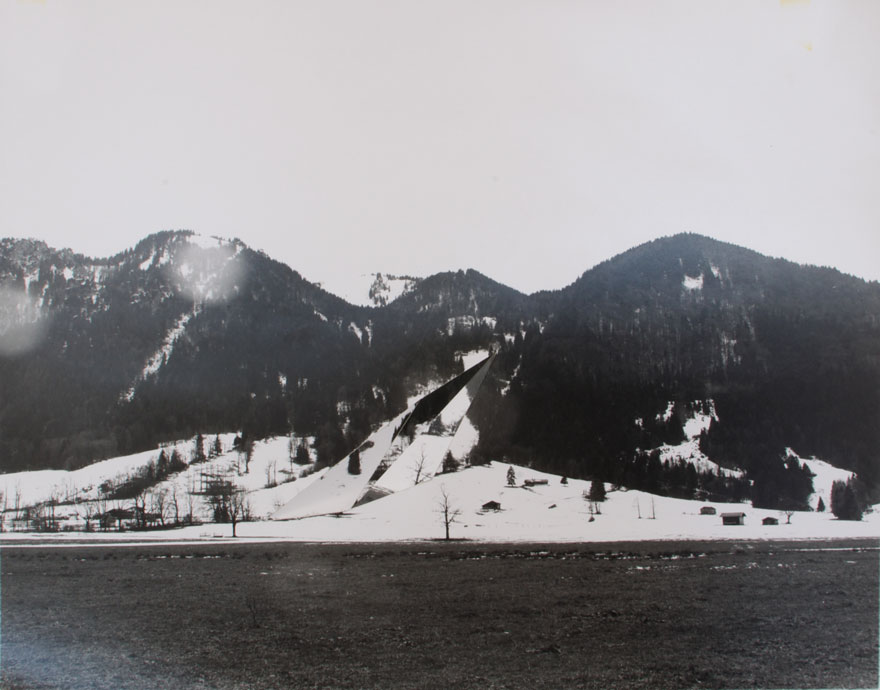
Zwischen Lenggries und Schwarz VI,
2010, Collage, 65 x 55 cm
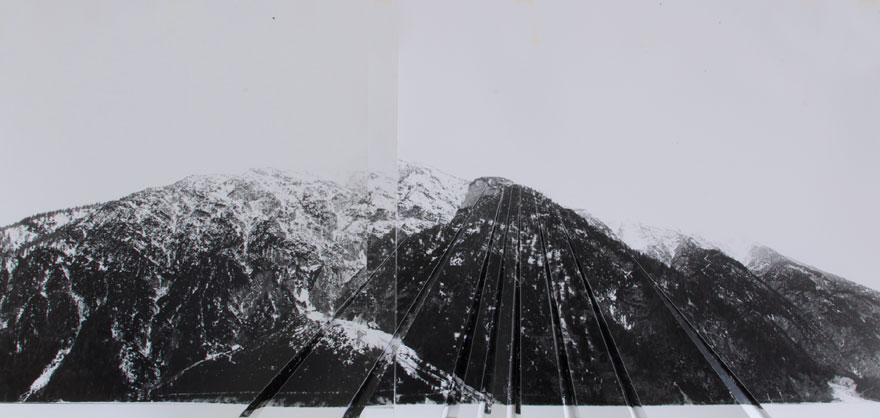 Zwischen
Lenggries und Schwarz II, 2010, Collage, 110 x 52.5 cm
Zwischen
Lenggries und Schwarz II, 2010, Collage, 110 x 52.5 cm
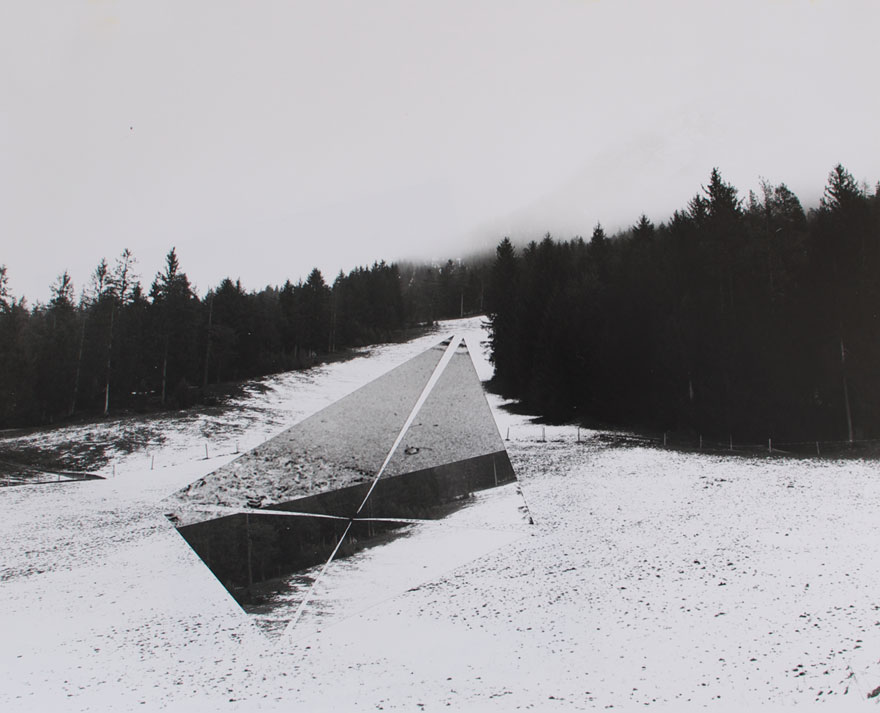 Zwischen
Lenggries und Schwarz V , 2010, Collage, 65
x 55 cm
Zwischen
Lenggries und Schwarz V , 2010, Collage, 65
x 55 cm
.jpg)
Constructed Visibilities I , 2010,
Collage, 37 x 28.5 cm
.jpg)
Constructed Visibilities II , 2010,
Collage, 37 x 28.5 cm

Constructed Visibilities III , 2010,
Collage, 37 x 28.5 cm

Constructed Visibilities IV , 2010,
Collage, 37 x 28.5 cm
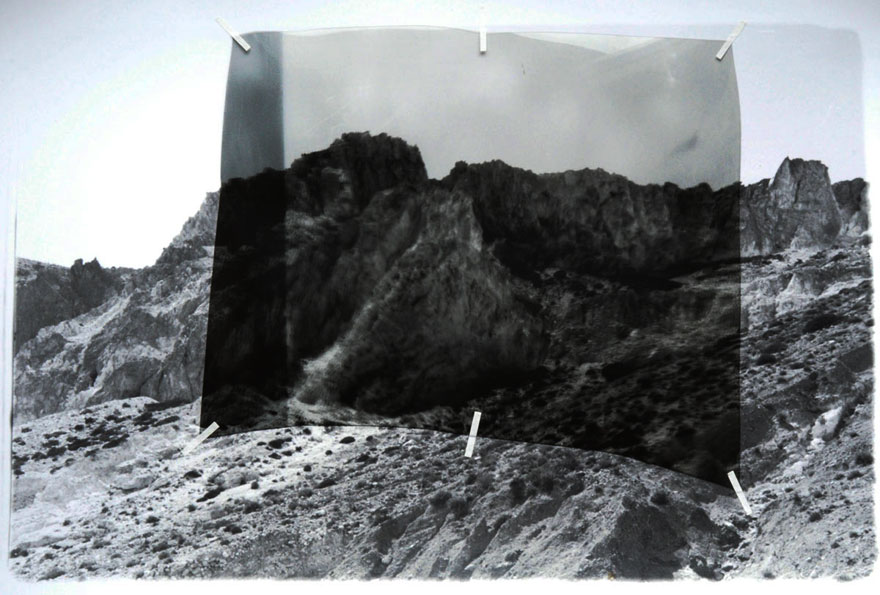
Milos I, 2010, Collage, 41.5 x 28.5
cm
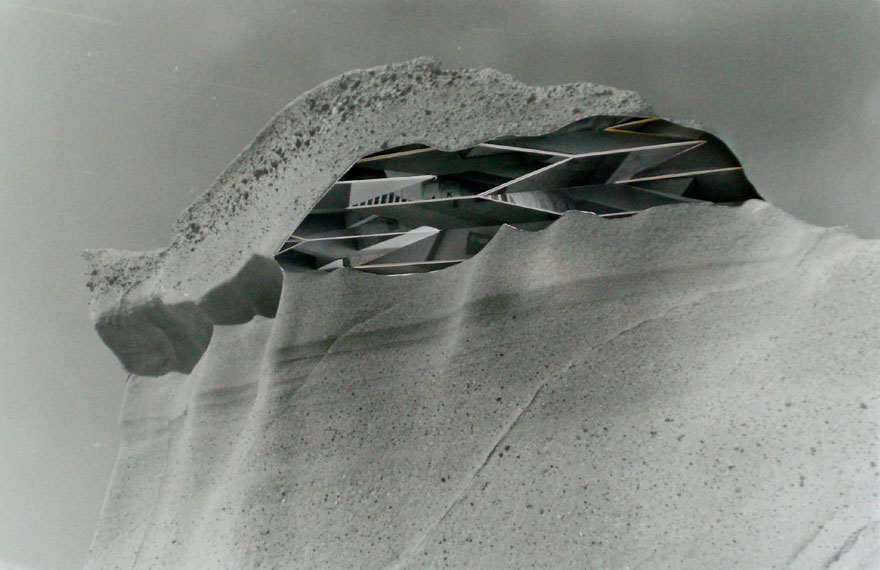
Milos II, 2010, Collage, 41.5 x 28.5
cm
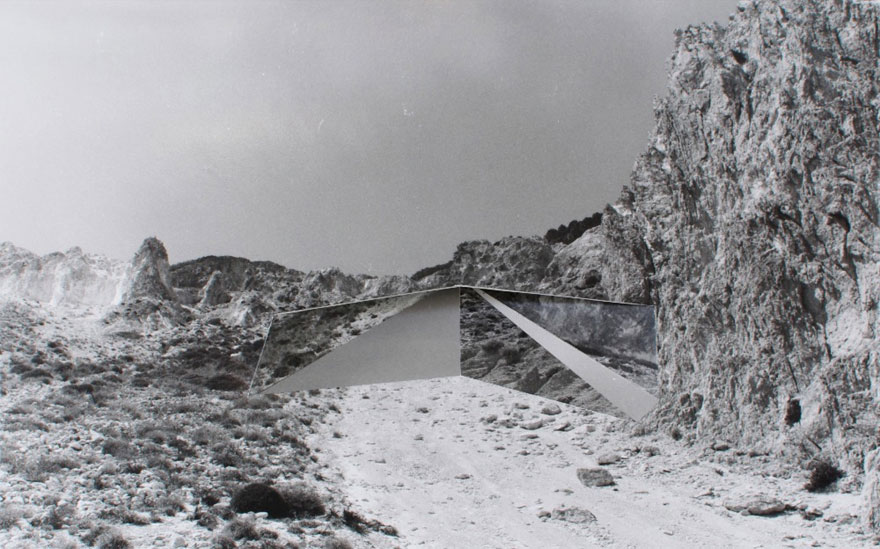
Milos III, 2010, Collage, 41.5 x 28.5
cm
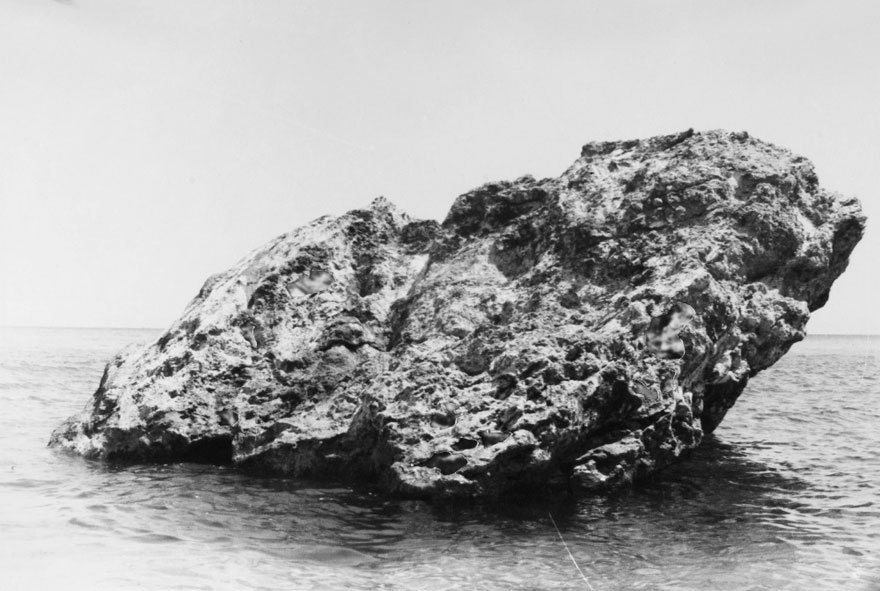
Milos IV, 2010, Collage, 41.5 x 28.5
cm
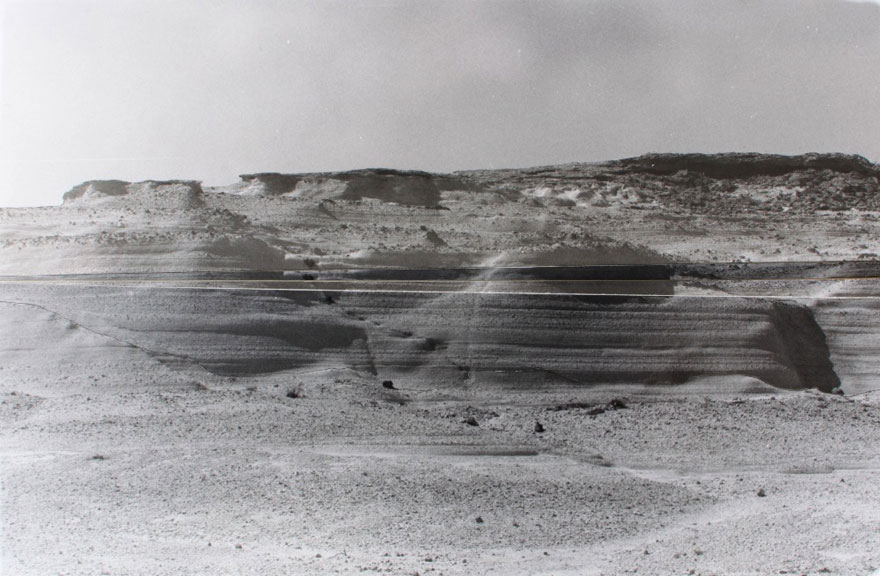
Milos V , 2010, Collage, 41.5 x 28.5
cm
© NETTIE HORN